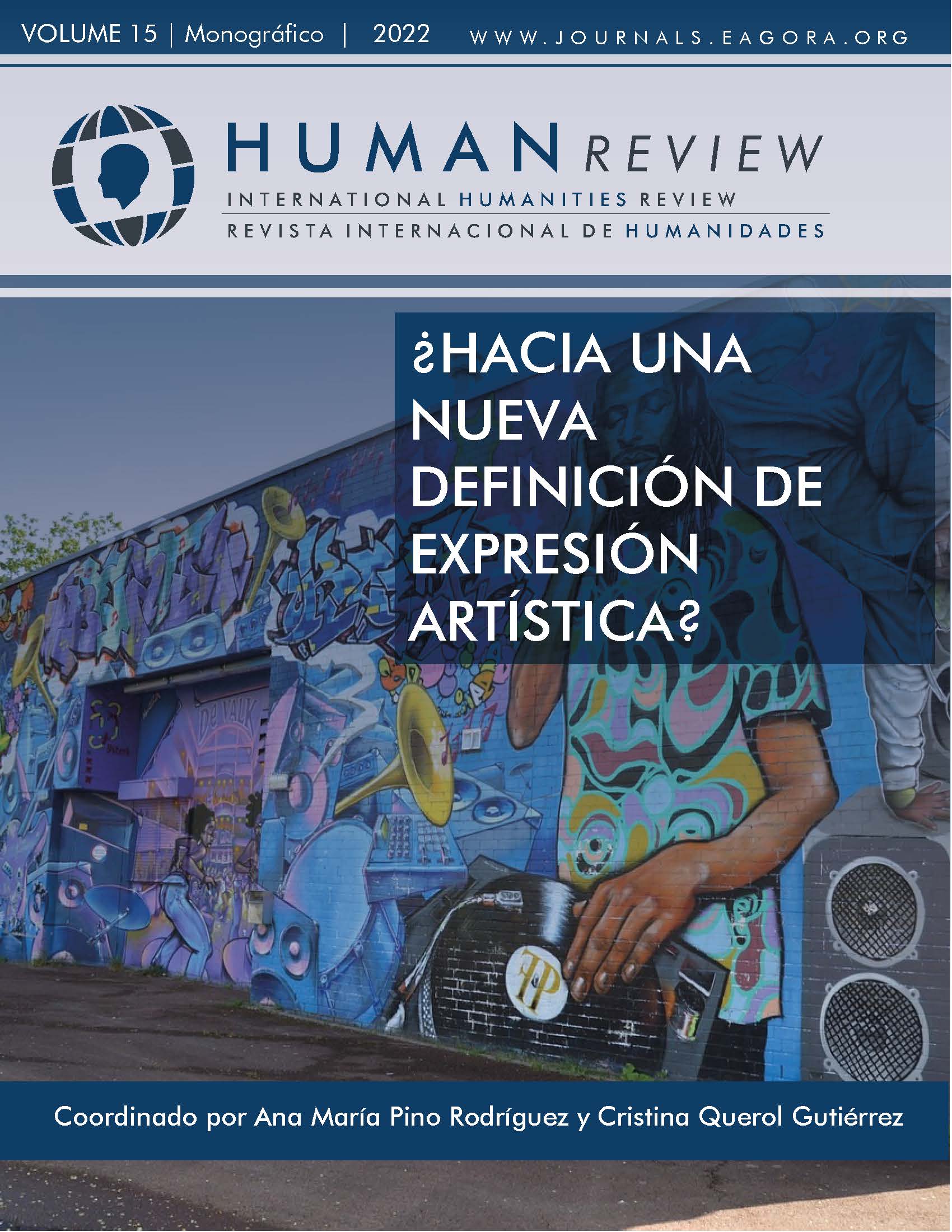Digitization of Mariemma's legacy audiovisual collection
The challenge of preserving intangible heritage
DOI:
https://doi.org/10.37467/revhuman.v11.4335Keywords:
Heritage, Dance, Music, Digitization, Audiovisual, Sound, GuidelinesAbstract
This article analyzes the digitization process and the difficulties encountered along the way, as a project that involved audiovisual technicians, academic researchers, and a famous Spanish dancer’s legacy: the audiovisual documents Guillermina Martínez Cabrejas, Mariemma, left to a museum located in her hometown. The specific criteria used to decide on the differences that arose in the process, provides great results and, also, a critical view on the limitations of the international preservation guidelines of digital objects.
References
Cavia, V. (2009). El ballet español en Mariemma o la amalgama de lo tradicional en Ibérica (1964). Etno-Folk: revista galega de etnomusicoloxía, (14), 390-426.
Cavia, V. (2010). Baile y cine: Mariemma en la Bolera de la danseuse espagnole (1943). IMAFRONTE, 21-22, 45-60.
Casey, M., & Gordon, B. (2007). Sound directions: Best practices for audio preservation. Indiana University and Harvard University. https://hdl.handle.net/2022/27339
Choy, S. C., Crofts, N., Fisher, R., Lek Choh, N., Nickel, S., Oury, C., & Ślaska, K. (2016). The UNESCO/PERSIST Guidelines for the selection of digital heritage for long-term preservation. UNESCO Content task force. https://unesdoc.unesco.org/ark:/48223/pf0000244280
Cushing, A. L. (2010). Highlighting the archives perspective in the personal digital archiving discussion. Library Hi Tech.
Delfín, J. (1983). Mariemma. Vallisoletanos: Colección de Semblanzas Biográficas. Obra Cultural Caja de Ahorros Provincial de Valladolid.
Echeverría, J. & Almendros, L. S. (2020). Tecnopersonas: cómo las tecnologías nos transforman. Trea.
Freixenet, L. T. (2010). La digitalización del Patrimonio Documental. Revista d‘Arxius, 9, 121-140.
Fyffe, R., Ludwig, D., & Warner, B. F. (2005). Digital preservation in action: Toward a campus-wide program. Educause Center for Appplied Research Bulletin, 98. https://bit.ly/3z80b34
Gabler, S. (2016). Quality Management for preservation of analogue and digital videotape. IASA Journal, 46, 50-57.
Gutiérrez Puebla, J. (2018). Big Data y nuevas geografías: la huella digital de las actividades humanas. Documents d‘anàlisi geogràfica 64(2). https://doi.org/10.5565/rev/dag.526
Fleischhauer, C., & Bradley, K. (Eds.) (2018). IASA-TC 06 Guidelines for the Preservation of Video Recordings. International Association of Sound and Audiovisual Archives.
IASA (2009) Guidelines on the Production and Preservation of Digital Audio Objects, IASA TC-04. International Association of Sound and Audiovisual Archives Technical Committee.
Jerez, M. (2021). Mariemma en la danza española. Primera aproximación catalográfica a la colección fotográfica del Museo Mariemma [Trabajo de Fin de Máster]. Universidad de Valladolid, Valladolid.
Liew, C. L. (2019, June). Digital audiovisual heritage: An exploration of challenges and a community-based approach to preservation. In Proceedings of the 9th International Conference on Communities & Technologies-Transforming Communities (pp. 76-80). Association for Computing Machinery. https://dl.acm.org/doi/proceedings/10.1145/3328320
Malssen, K. (2013). The recovery of Eyebeam Art+Technology Center’s multimedia collection following Superstorm Sandy, a case study. Association of Sound and Audiovisual Archives (IASA) Journal, (41), 29–39. https://www.iasa-web.org/sites/default/files/iasa_journal_41_part5.pdf
Mezzo, G. (2002). La creazione di un archivio digitale Ri-mediazione dei documenti sonori. Forum.
Purdy, T. (2019). Review of Moving Image and Sound Collections for Archivists. International Association of Sound and Audiovisual Archives (IASA) Journal, (50), 91–92. https://doi.org/10.35320/ij.v0i50.96
Redwine, G. (2015). Personal Digital Archiving-DPC Technology Watch Report 15-01. Digital preservation coalition. http://dx.doi.org/10.7207/twr15-01
Rodríguez, P.O. (2018). La colaboración científica e institucional para la preservación digital de la herencia sonora. In M. Fernández, R. Sánchez & I. Villaseñor, I. (Eds). Conocimientos sin Fronteras: Colaboración Científica e Institucional en Documentación e Información (pp.121-140). Universidad Complutense de Madrid.
Schüller, D. (1997) Preservation of Audio and Video Materials in Tropical Countries. In H. P. Harrison (ed.) Audiovisual Archives. A Practical Reader. General Information Programme & UNISIST (p.286) UNESCO. https://core.ac.uk/download/pdf/14516853.pdf
Schüller, D. (2008). Audiovisual research collections and their preservation (p. 77). European Commission on Preservation and Access.
Seay, T. (2011). Using existing institutional resources for establishing and preserving audio-visual collections. International Association of Sound and Audiovisual Archives (IASA) Journal, (37), 41–46. https://www.iasa-web.org/sites/default/files/iasa-journal-37-part6.pdf
UNESCO (2003). Guidelines for the preservation of digital heritage. Information Society Division United Nations Educational, Scientific and Cultural Organization. http://unesdoc.unesco.org/images/0013/001300/130071s.pdf
Wallaszkovits, N. (2010). Digitisation of Research Sound Collections: Practical Application of IASA Guidelines in Small-Scale Digitisation Projects. International Association of Sound and Audiovisual Archives (IASA) Journal, (35), 89-98.
Wallaszkovits, N. (2012). Providing Access to Research Sound Collections: Quick and dirty or Highest Quality. Actas de la 43rd IASA Annual Conference 2012. New Delhi (India).
Downloads
Published
How to Cite
Issue
Section
License
Those authors who publish in this journal accept the following terms:
- Authors will keep the moral right of the work and they will transfer the commercial rights.
- After 1 year from publication, the work shall thereafter be open access online on our website, but will retain copyright.
- In the event that the authors wish to assign an Creative Commons (CC) license, they may request it by writing to publishing@eagora.org









